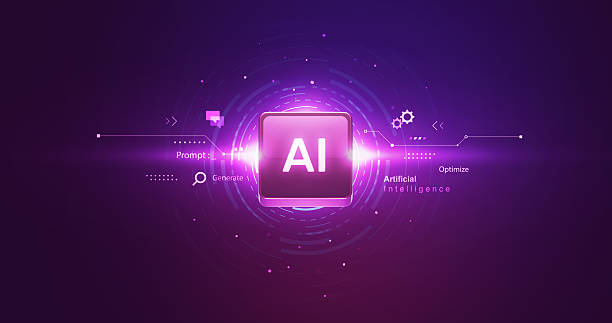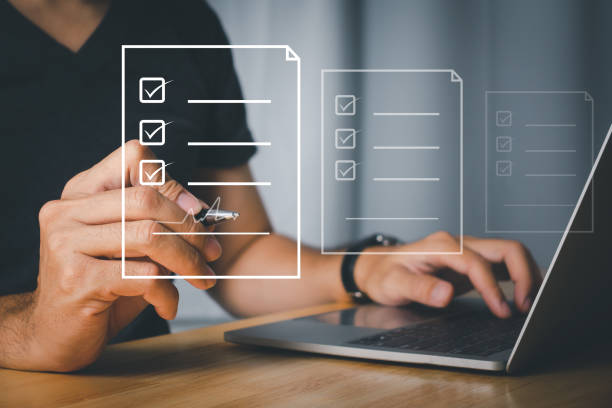What is On-Page SEO? Fundamental Understanding of On-Page Optimization

On-Page SEO or #On-Page_SEO, is a set of actions and techniques performed within your website and on its pages to improve search engine rankings.
Unlike Off-Page SEO, which focuses on external factors like link building, this process is entirely within your control and includes optimizing content, HTML code, and user experience.
From an educational perspective, On-Page SEO is like organizing your wardrobe; the neater and more precisely labeled it is, the easier it will be to find the desired clothing item.
This approach is not limited to keywords but also includes optimizing title tags, meta descriptions, headings, URL structure, image optimization, internal links, and page loading speed.
The main goal of On-Page SEO is to help search engines better understand your page’s content and its relevance to user queries.
This explanatory and foundational section helps you gain a correct understanding of the principles and basics of On-Page SEO.
Many people assume that On-Page SEO is limited to merely placing keywords in the text, whereas this is only a small part of a larger puzzle.
A web page should be optimized in such a way that it is both understandable to complex search engine algorithms and provides an enjoyable user experience.
This means your content must be high-quality, relevant, and valuable.
Using appropriate heading structures (H1 to H6), short and readable paragraphs, as well as smart use of white space, all contribute to improving readability and, consequently, internal optimization.
The importance of On-Page SEO is such that without it, even with strong backlinks, you may not achieve desirable ranking results.
In fact, On-Page SEO is the foundation of any successful SEO strategy and deserves special attention.
This is especially true in competitive markets, where it can be the difference between being seen and being ignored.
On-Page SEO not only increases your organic traffic but also improves user conversion rates, as users are directed to pages they are precisely looking for.
This is a long-term investment that yields significant returns.
Tired of missing business opportunities due to not having a professional corporate website? Don’t worry anymore! With Rasaweb’s corporate website design services:
✅ Your brand’s credibility and professionalism will increase.
✅ Attract more customers and sales leads.
⚡ Get a free consultation now to start!
Why is On-Page SEO Critically Important? Hidden and Obvious Benefits
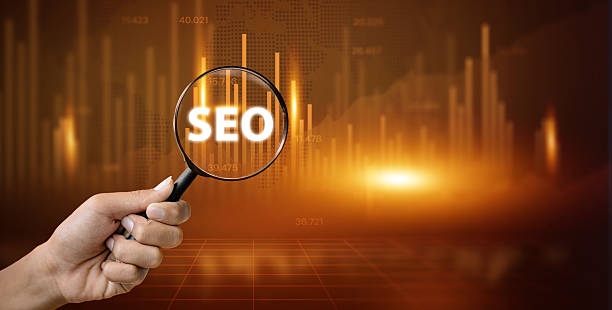
The importance of On-Page SEO goes beyond a simple Google ranking.
This section analytically and guidance-wise examines the vital reasons for this type of optimization.
The first and perhaps most important reason is helping search engines better understand your content.
Search engines use crawlers to scan websites, and On-Page SEO helps these crawlers correctly identify the structure, topic, and relevance of each page to specific keywords.
Without proper optimization, even the best content may be overlooked.
The second reason is improving user experience (UX).
When a page is optimized, its loading speed will be fast, navigation easy, and its content organized and readable.
These factors help reduce the Bounce Rate and increase user time on site, both of which are considered positive signals for search engines.
Furthermore, On-Page SEO allows you to attract the most targeted traffic possible.
By optimizing for specific keywords, you ensure that users coming to your site are precisely those looking for your content.
This directly impacts the Conversion Rate and turns your site into a valuable resource for visitors.
On the other hand, question-provoking content and answering common user questions within pages not only boosts your content’s value but also enhances your credibility.
Consequently, On-Page SEO is not just a technical tactic, but a comprehensive strategy for improving the overall health and performance of your website.
Investing in it guarantees long-term stability and growth in the digital world and can help you outperform competitors.
This approach helps you leverage the full potential of every page on your website and transform it into a powerful asset in your online marketing strategy.
Key Elements of On-Page SEO: Keyword Research and Content Optimization
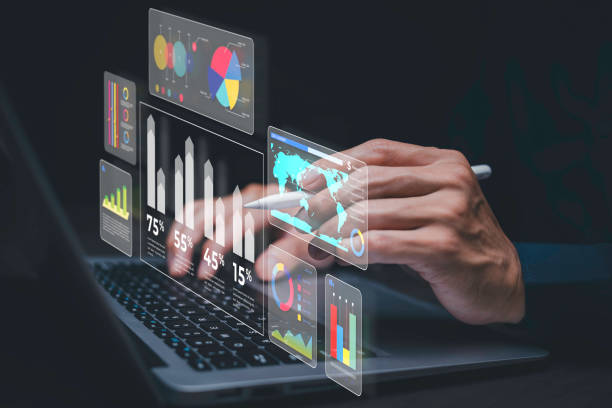
At the heart of every successful On-Page SEO strategy lies keyword research and content optimization.
These two elements, in a specialized and educational manner, play a fundamental role in your success.
Keyword research is the first step and involves finding the phrases that users actually use in search engines to find information related to your business or content.
This process goes beyond merely identifying highly searched terms; you must also pay attention to users’ Search Intent.
Are they looking for information, making a purchase, or navigating? Tools like Google Keyword Planner, Ahrefs, Semrush can be very helpful at this stage.
After identifying the appropriate keywords, it’s time for content optimization.
Content optimization means naturally and strategically integrating keywords into the text, titles, subtitles, meta descriptions, and image alt text.
Content must be high-quality, valuable, and unique.
Question-provoking content that answers common user questions can increase engagement and boost ranking chances.
Keyword density should be natural, and Keyword Stuffing should be avoided, as this can lead to penalties from search engines.
Longer and more comprehensive content generally performs better, provided it is valuable and concise.
Using synonyms and related keywords (LSI keywords) also helps search engines better understand the main topic of your content.
This comprehensive approach to content optimization forms the backbone of strong On-Page SEO, making your content appealing to both users and search engines.
| Content Optimization Element | Description and Importance | How to Implement |
|---|---|---|
| Primary Keywords | Phrases users use to find your content. | In-depth research, understanding search intent, natural usage in text. |
| High-Quality Content | Providing valuable, accurate, and comprehensive information to users. | Writing unique content, addressing user needs, regular updates. |
| Heading Structure (H1-H6) | Organizing content for better readability and search engine understanding. | Using one main H1 and subheadings H2, H3 for segmentation. |
| Keyword Density | The frequency of keyword repetition in the text. | Natural usage, avoiding over-repetition, using synonyms. |
| LSI Keywords | Synonyms and related phrases that help the search engine understand the concept. | Searching for related words in Google (suggestions, related searches). |
Technical Aspects of On-Page SEO: Site Structure, URLs, and Mobile-Friendliness
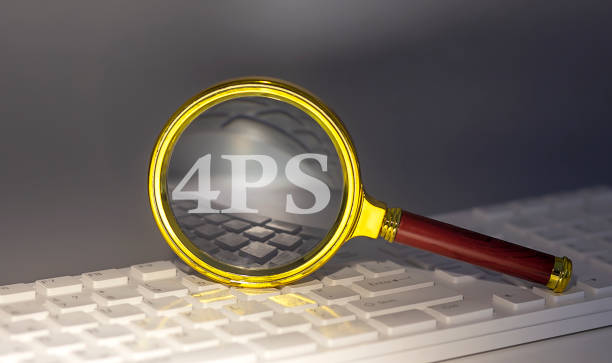
On-Page SEO is not limited to content alone; technical aspects also play a vital role.
This section expertly and guidance-wise addresses the importance of site structure, URL optimization, and mobile-friendliness.
A logical and hierarchical site structure helps search engines easily crawl and index your pages.
A Silo Structure or hierarchical structure, where main pages link to more granular sub-pages, is often recommended.
This not only aids SEO but also makes site navigation easier for users.
Optimizing URLs is also a crucial part of On-Page SEO.
URLs should be short, descriptive, and contain primary keywords.
Avoid special characters and long numerical IDs.
Using hyphens (-) instead of underscores (_) to separate words in URLs is recommended.
For example, `example.com/on-page-seo-guide` is better than `example.com/seo_internal_guide`.
Website mobile-friendliness is no longer an option today, but a necessity.
With the significant increase in mobile internet usage, Google uses Mobile-First Indexing.
This means Google primarily considers your site’s mobile version for ranking.
Therefore, ensuring your website is responsive, has high loading speed on mobile, and is easy to use on touch devices is crucial for the success of your On-Page SEO.
These factors all contribute to improving user experience and, consequently, positive signals to search engines.
Is your e-commerce site ready to attract maximum customers and increase sales? Rasaweb revolutionizes your online business with modern and efficient e-commerce website design.
✅ Increased speed and improved SEO
✅ Excellent user experience on mobile and desktop⚡ Get a free e-commerce website design consultation from Rasaweb!
Optimizing Meta Tags: Title, Description, and Headings
![]()
Meta tags and headings are vital components of On-Page SEO that help search engines and users better understand your page’s content.
This section educationally and explanatorily discusses the importance of optimizing the Title Tag, Meta Description, and Headings (H1-H6).
The title tag is the first thing users see in search results and directly impacts the Click-Through Rate (CTR).
An optimized title tag should include the primary keyword, be engaging and enticing, and typically be between 50 and 60 characters long to be fully displayed.
Meta descriptions, although not directly impacting ranking, play a significant role in attracting clicks.
A good meta description should provide an attractive and accurate summary of the page’s content, include relevant keywords, and encourage the user to click.
The ideal length for a meta description is around 150-160 characters.
Headings (H1 to H6) define your content’s structure and help readers and search engines find your content organized and understandable.
Only one H1 tag should be used per page, which typically includes the primary keyword and indicates the main title of the content.
H2, H3, and other tags are used for subheadings and help break down content into smaller, digestible sections.
Correct use of these elements not only increases content readability but also sends strong signals to search engines about the topic and relevance of your content to user queries.
Collectively, these factors significantly contribute to improving your ranking in search results and are considered one of the key parts of On-Page SEO.
Image Optimization and Internal Linking: The Hidden Power of On-Page SEO

Images and internal links are two often-overlooked but very powerful elements in the On-Page SEO strategy.
This section guidance-wise and explanatorily addresses how to optimize them.
Image optimization involves several key steps.
First, compressing images to reduce file size and improve page loading speed is crucial, without significantly degrading their quality.
New formats like WebP can also help with this.
Second, using descriptive file names and keywords in them (for example, `on-page-seo-image.jpg` instead of `IMG_1234.jpg`).
Third, and most importantly, filling in the Alternative Text (Alt Text) for each image.
Alt Text should be descriptive and include relevant keywords, as this text is read by search engines and helps them understand the image content.
This is also very beneficial for visually impaired users who use Screen Readers.
Internal linking is also an important backbone for On-Page SEO.
Internal links allow you to connect different pages of your website to each other.
This has several benefits: it helps search engines discover new pages and understand which pages are more important (passing Link Juice).
It also helps users easily navigate your site and find more relevant information, leading to increased time on site and reduced bounce rate.
When creating internal links, use appropriate Anchor Text; that is, the text on which the link is placed should be descriptive and relevant to the destination page and include the target keyword.
For example, instead of “Click Here”, use “comprehensive On-Page SEO guide”.
A strong internal linking structure acts like a neural network within your site, helping to increase page authority and improve overall On-Page SEO.
User Experience and Core Web Vitals: The Cornerstone of On-Page SEO

In today’s On-Page SEO world, User Experience (UX) and Core Web Vitals metrics are recognized as the main pillars for evaluating website performance by Google.
This section analytically and explanatorily addresses the importance of these factors.
Core Web Vitals are three key metrics that Google has introduced to measure the user experience of web pages: LCP (Largest Contentful Paint), FID (First Input Delay), and CLS (Cumulative Layout Shift).
LCP (Largest Contentful Paint) measures the time it takes for the largest visible content element on the page to load.
The goal is for LCP to be under 2.5 seconds.
FID (First Input Delay) measures the site’s responsiveness to the user’s first interaction (e.g., clicking a button).
The goal is for FID to be under 100 milliseconds.
CLS (Cumulative Layout Shift) measures the visual stability of the page and indicates how much elements on the page shift after loading.
The goal is for CLS to be under 0.1.
Improving these metrics is not only crucial for On-Page SEO but also directly impacts user satisfaction.
Faster and more stable websites provide a better experience, which in turn leads to reduced bounce rates, increased time on site, and ultimately better rankings in search results.
Optimizing images, reducing unnecessary code, using a CDN, and improving web hosting can all help improve Core Web Vitals.
| Core Web Vital Metric | Definition | Good Threshold | Improvement Tips |
|---|---|---|---|
| LCP (Largest Contentful Paint) | Time to load the largest content element on the page. | ≤ 2.5 seconds | Image optimization, caching, reducing server response time, removing unnecessary codes. |
| FID (First Input Delay) | Time delay between the user’s first interaction and browser response. | ≤ 100 milliseconds | Reducing JavaScript execution time, optimizing client-side code. |
| CLS (Cumulative Layout Shift) | Amount of layout shift of page elements during loading. | ≤ 0.1 | Specifying dimensions of images and videos, avoiding sudden injection of dynamic content. |
Content Strategy for On-Page SEO: Quality, Engagement, and Innovation
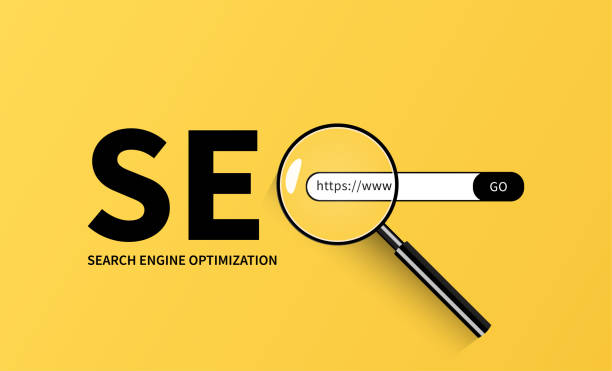
Content is king, and this statement holds truer than ever for On-Page SEO.
This section addresses effective content creation strategies in a question-provoking and entertaining manner.
Is simply creating a lot of content enough? The answer is no.
Quality outweighs quantity.
Your content must be in-depth, comprehensive, accurate, and unique.
Instead of repeating existing information, try to offer a new perspective or examine a topic from less-explored angles.
This approach is not only more engaging for users but also shows search engines that you are a credible and valuable resource.
In addition to quality, user engagement is also very important.
Is your content written in a way that encourages users to stay, read more, and interact (e.g., through comments or sharing)? Using diverse content formats such as videos, infographics, podcasts, or surveys can increase the appeal of your content.
Question-provoking content that addresses users’ real challenges and needs can quickly go viral and drive significant organic traffic to your site.
For example, a comprehensive article on “How can I improve my site speed for On-Page SEO?” accompanied by practical examples and step-by-step instructions, is far more valuable than a short, superficial text.
Also, regularly updating old content with new and relevant information not only helps maintain ranking but also shows Google that your site is active and dynamic.
Finally, innovation in content delivery and striving to create a different and memorable user experience can distinguish you from competitors and give your internal optimization an added boost.
Is your company’s website as professional and trustworthy as it should be? With specialized corporate website design by Rasaweb, create an online presence that reflects your credibility and attracts more customers.
✅ Building a powerful and professional image for your brand
✅ Converting visitors into real customers
⚡ Get a free consultation now!
Monitoring and Analyzing On-Page SEO: Key Tools for Success

After implementing On-Page SEO strategies, the crucial stage of monitoring and analysis begins.
This section analytically and informatively discusses the tools and methods necessary for evaluating performance and identifying opportunities for improvement.
Without correct data and analysis, you will never know which strategies have been effective and which need optimization.
The main tools in this area include Google Analytics and Google Search Console.
Google Analytics allows you to monitor your website’s traffic, including traffic source, user behavior on the site (such as pages visited, time on page, bounce rate), and conversion rates.
By analyzing this data, you can identify underperforming pages and take action to improve them.
For example, if a particular page has a high bounce rate, it might be an indication of irrelevant content, slow loading speed, or poor user experience.
Google Search Console (GSC) is an essential tool for every webmaster, providing direct information from Google about your site’s performance in search.
GSC shows you which keywords your site ranks for, how many clicks and impressions it receives, and whether there are any indexing issues or crawl errors.
The Core Web Vitals report in GSC is also very important for monitoring the technical health of your On-Page SEO.
By regularly using these tools, you can identify positive and negative trends and make data-driven decisions for continuous improvement of your On-Page SEO.
This is an ongoing process, and success in SEO requires frequent review and adjustments.
Common On-Page SEO Mistakes and How to Avoid Them?
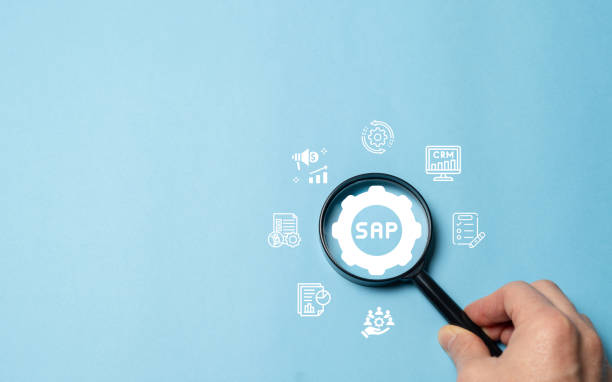
Even the most experienced SEO professionals can make mistakes, but recognizing common On-Page SEO mistakes can help you avoid them.
This section guidance-wise and expertly examines these mistakes and solutions to avoid them.
One of the most common mistakes is Keyword Stuffing.
Attempting to overuse a specific keyword in content not only reduces readability but can also lead to penalties from Google.
The solution is to use keywords naturally and in the appropriate context, and also leverage synonyms and related keywords.
Another mistake is ignoring page loading speed.
Slow pages degrade user experience and severely negatively impact rankings.
Optimizing images, compressing code, and using a CDN can help improve speed.
Lack of mobile optimization is also a big mistake.
Given Google’s mobile-first indexing, if your site doesn’t work well on mobile, you lose your ranking chances.
Not using optimized title tags and meta descriptions or having none at all is also a lost opportunity.
These tags are the first interaction users have with your site in search results.
Also, poor site structure and weak internal linking can make it difficult for search engines to crawl and index pages.
Ignoring the importance of high-quality and unique content, and producing duplicate or low-value content, also deals a fatal blow to your On-Page SEO.
Finally, the lack of continuous monitoring and analysis of site performance through tools like Google Search Console prevents identifying and resolving issues in a timely manner.
By avoiding these mistakes and focusing on the correct principles of On-Page SEO, you can pave your way to success.
Frequently Asked Questions
| Question | Answer |
|---|---|
| What is On-Page SEO? | It refers to a set of actions performed within a website to improve its ranking in search engines. |
| Why is On-Page SEO important? | Because it helps search engines better understand your site’s content and structure, and improves user experience. |
| What are the most important elements of On-Page SEO? | Title and meta descriptions, keywords, URL structure, quality content, image optimization, internal linking, and site speed. |
| How to optimize Title Tags and Meta Descriptions? | The title should include the main keyword and be engaging, and the meta description should be a compelling summary of the content with relevant keywords. |
| What is the role of keywords in On-Page SEO? | Keywords inform search engines about the page’s content and should be used naturally and intelligently within the text. |
| How is image optimization done for On-Page SEO? | By compressing size, using descriptive file names, and filling in the Alt tag with relevant descriptions and keywords. |
| What is Internal Linking and what is its use? | It is the connection of different pages within a site. This helps distribute Page Authority and improves search engine crawling. |
| What is the importance of site loading speed in On-Page SEO? | High speed improves user experience and is a crucial ranking factor for search engines like Google. |
| What impact does site responsiveness (Mobile-Friendliness) have on On-Page SEO? | Given the increase in mobile users, responsiveness is essential for providing a suitable user experience across all devices and for Google’s mobile-first indexing priority. |
| What are the important content-related factors in On-Page SEO? | Originality, quality, comprehensiveness, readability, proper use of headings (H1, H2,…), and regular content updates. |
And other advertising services from Rasaweb advertising agency
Smart Digital Branding: Revolutionize online growth with custom programming.
Smart Advertising Campaign: A blend of creativity and technology to increase click-through rates through custom programming.
Smart Sales Automation: Transform digital branding with attractive UI design.
Smart Digital Branding: A quick and efficient solution to increase click-through rates, focusing on Google Ads management.
Smart Marketing Automation: A quick and efficient solution for user engagement, focusing on SEO-driven content strategy.
And over hundreds of other services in the field of internet advertising, advertising consultation, and organizational solutions.
Internet Advertising | Advertising Strategy | Advertorials
Resources
What is On-Page SEO? A Comprehensive Guide
Complete Guide to On-Page SEO
Zero to Hundred SEO: A Comprehensive Guide
Fundamentals of Website Optimization for Search Engines
? For a powerful presence in the digital world, Rasaweb Afarin, by providing the best digital marketing services including corporate website design, accompanies your business.
📍 Tehran, Mirdamad Street, next to Bank Markazi, Southern Kazeroon Alley, Ramin Alley, No. 6


